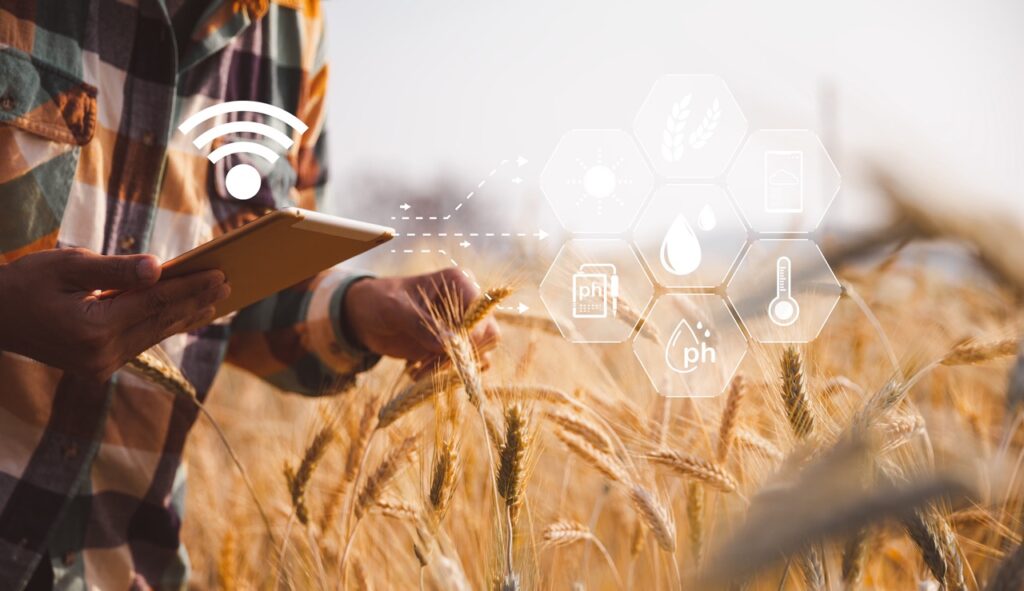Can You Hear Me Now? Remote Wi-Fi in the Connected World
(Image courtesy of Tony Webster, via Flickr Creative Commons) One of the more fascinating aspects of our eternal march toward ‘the future’ is the occasional, but impacting, intersection of our critical infrastructure and the general consumer. Like a sine wave across the axis, our connected world meets at points in time that catalyze technological explosions. The transition of computers from behemoth industrial-sized calculators into the first iteration of the personal computer is a good, somewhat recent example. So is the Internet. Each of those began as a fairly raw tool used for enterprise industrial services before intersecting with the consumer and birthing new innovations and applications.Today, the connected world on the horizon, envisioned by dreamers and pragmatists alike, is taking form on the backbone of wireless connectivity in a way that has the ability to impact our critical industries, our smart cities, our homes and our daily lives like never before. Remote Wi-Fi is a tool that has enabled connectivity and data transport for industries like oil and gas, precision agriculture, utilities and seismic monitoring, leading to a boom in the use of predictive analytics to better streamline the work processes in the field for these traditionally remote areas. However, two of the main problems with traditional remote wi-fi network deployment are the security of these networks, as well as the latency of the data transmission. To combat this, these industries have turned to the use of shorthaul (between 1-5 miles) wi-fi hotspots to utilize built-in security measures and decrease latency for data-intensive applications like voice, video, data and sensor connectivity. As a result, these industries have been better able to collect and transport data throughout an entire smart ecosystem, affecting everything from decision-making in the field, to the way the consumer can track personalized utility usage. Our smart cities and municipalities depend on data collected remotely to anticipate infrastructure-related resiliency issues, like grid outages, seismic events and disaster preparedness. Companies in these industries depend on remote data to solve production, maintenance and transport problems. Wi-Fi Will Save the Connected World In early January, the Wi-Fi Alliance, a worldwide network of companies trying to standardize global Wi-Fi provision, announced a new protocol that promises to trigger changes throughout the industrial landscape. Wi-Fi HaLow, as it is called, is an addendum to the IEEE 802.11ah protocol that is set to be finalized later in 2016. HaLow operates in frequencies below 1 GHz and can potentially provide a longer range than Wi-Fi has traditionally offered. The implications for remote Wi-Fi and the Industrial Internet of Things are huge. The addendum means more efficient battery usage due to operating on a lower frequency and with a lower data rate, which, in turn means a greater range and lower transmission power. This standard is still awaiting a final vote, so before we anoint HaLow as the magic bullet for which the Internet of Things has been waiting, the IEEE standards committee will have its say. To come full circle, the potential advent of better long-range Wi-Fi in remote settings could be the next intersection of the axis and the sine wave, enabling innovation and growth at both the industrial and consumer levels of connected-world technology.
IIoT Top News: 2015 News Round-Up
Let’s take a moment and appreciate the excitement 2015 brought for the IIoT: As we look back at the top articles from the year, we were intrigued to learn that cooperative utilities actually have the largest penetration of smart grid meters per percentage of customers, according to Greentech Media and the U.S. Energy Information Administration. It’s interesting to see the largest publicly-owned utility companies in the U.S. are not the leader in deploying smart meter systems. Another topic that caught our eye this year focused on big data initiatives and how they will improve operational efficiencies by the large-scale storage and transfer of volumes of information safely and securely. Companies don’t always see the value in updating information governance policies because there isn’t always a direct reward and no direct penalty for non-compliance. Tim Jennings, Ovum chief research officer, believes as big data continues to grow within the company infrastructure, it is time to consider the security, availability, and time spent storing data. Speaking of Big Data… It is hard to grasp the magnitude of data transferred throughout the cloud. Today, as big data goes to work, it is transforming industrial facilities, and as Forbes states, “they have grown increasingly complex and yes, every machine, every pipeline, every transmission point collects data ready to be read.” Of course, a 2015 news review would not be complete without at least one mention of unmanned systems. Whether the want/need was for industrial, commercial or government applications, the thing on everyone’s mind was how many cool ways this technology could be deployed in the future. While there were many examples to choose from, DARPA certainly caught a lot of attention from its new autonomous submarine-hunting ocean drone. Yes, you read that right! Finally, as we ease our way into 2016, we would like to share the rest of the top technology and IIoT stories from 2015. This year’s round-up highlights articles about: utilities, manufacturing, oil and gas, wireless, big data, security, drones and industry analyst perspectives. Hope you enjoy this week’s roundup, and as always, tell us what we missed! Energy Six Ways IoT Enables Innovation in the Energy Industry (IT World Canada) The energy industry is learning to use IoT to its advantage. IT World Canada details six ways IoT is enabling innovation and improving overall cost and efficiency for the industry. Yogi Schulz with IT World Canada believes that “Applying these IoT advances to a range of energy industry problems will be a major factor in helping the industry return to profitability in the new, lower commodity price environment through innovation based on better data.” Manufacturing Machine Learning (The Economist) As manufacturing becomes digitized, the industry has to adjust from being a product-focused world to a services market, with smart machines installed on the shop floor. The Economist believes that “For many manufacturers—in Germany and beyond—the principal sticking-point in making this digital leap is often cultural.” Manufacturing’s Digital Future (Industry Week) The digital future of manufacturing will incorporate the data analytics, cloud and many other wireless IoT solutions. Industry Week believes “many companies are leveraging interconnectivity to improve their own factory productivity, the factory-floor blocking and tackling of reducing downtime, cutting costs, reducing cycle time, improving OEE, etc.” Oil and Gas In the Digital Oilfield, “No Wires is a No-Brainer (World Oil) With the digital progression of our world, it seems only fitting we would find IoT in the oilfield. The question we must ask is: “Why, in 2015, has wireless I/O not overtaken hardwired infrastructure as the industry standard throughout the OFS sector?” Big Data Internet of Things Transforming Oil and Gas Operations (RigZone) Analytical movement has increased as the cost of oil continues to drop, therefore forcing the oil industry to gravitate toward more big data and IoT. It has been said, “the amount of data generated by oil and gas operations is starting to explode as real-time information from sensors is being collected at a rate of four milliseconds.” Wireless Tech Darpa’s RadioMap Detects RF Spectrum Congestion (GCN) An interconnected connected wireless world has created congested airways, thus making military communication and intelligence gathering requiring radio frequencies be managed. “RadioMap adds value to existing radios, jammers and other RF electronic equipment used by our military forces in the field,” said John Chapin, DARPA program manager. Big Data The Ethics of Big Data (Tech.Co) Big data has been defined as information that has been either unstructured or multi-structured as way to transform data into value. Once you have given value to the data, it is important to realize who owns the data. Tech.CO says that “when it comes to big data ethics, privacy is not necessarily dead, shared information can still have a reasonable degree of confidentially, but big data can still compromise identity and other information that customers and businesses prefer to be confidential.” Security IoT Security Needs to Stop Being an Afterthought (PCR) In the age of smart homes and smart devices it is time to improve the IoT security across the board. The Internet Society (ISOC) recently released a white paper stating, “the vendors who use IoT should take more responsibility for the security issues that can occur with IoT products.” Drones Robo-Bulldozers Guided By Drones Are Helping Ease Japan’s Labor Shortage (The Verge) Komatsu had to find a way to complete construction projects, as Japan gets closer to the 2020 Olympics. The aging population makes it hard to find anyone able to complete the work. The fix Komatsu has found is to offer a service called Smart Construction where, “a team of robotic vehicles scoops rock and pushes dirt without a human behind the wheel. They are guided in their work by a fleet of drones, which map the area in three dimensions and update the data in real time to track how the massive volumes of soil and cement are moving around the site.” Deforestation: British Firm Developing Tree-Planting Drone to Counter Industrial-Scale Logging (The Independent) A British engineering company is hoping to get international backing for an automated tree planting drone system. The purpose of these drone planting fleet’s, would be not



